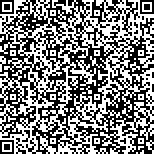| 引用本文: | 王笑笑,周勇,徐国群,徐玲笑,顾一飞,徐都之,刘诗诗,王也.黄酮类成分在蜂蜜抗菌性中的效能研究[J].中国现代应用药学,2017,34(3):363-369. |
| WANG Xiaoxiao,Zhou Yong,XU Guoqun,XU Lingxiao,GU Yifei,XU Duzhi,LIU Sisi,WANG Ye.Study on the efficacy of flavonoids in the antibacterial properties of honey[J].Chin J Mod Appl Pharm(中国现代应用药学),2017,34(3):363-369. |
|
| |
|
|
| 本文已被:浏览 1920次 下载 2985次 |

码上扫一扫! |
|
|
| 黄酮类成分在蜂蜜抗菌性中的效能研究 |
|
王笑笑1, 周勇1, 徐国群2, 徐玲笑1, 顾一飞3, 徐都之3, 刘诗诗4, 王也1
|
|
1.衢州市食品药品检验研究院, 浙江 衢州 324002;2.衢州出入境检验检疫局, 浙江 衢州 324002;3.衢州学院, 浙江 衢州 324002;4.浙江千红蜂产品有限公司, 浙江 江山 324100
|
|
| 摘要: |
| 目的 为了解蜂蜜的抗菌性与其黄酮类成分含量的相关性。方法 采用UV测定蜂蜜中的总黄酮含量;采用UPLC-MS/MS,以12种黄酮类成分为对照品对蜂蜜中的黄酮类成分及其含量进行测定;以平皿法检测蜂蜜和81%糖溶液在不同质量分数下的抗菌性能。结果 7个市售蜂蜜均含有黄酮类物质,但因蜜源植物不同,总黄酮含量差异显著,其中以枣花蜜(千红)含量最高(87.138 μg·g-1),玫瑰花蜜(青海)含量最低(28.649 μg·g-1),12种黄酮类成分在各蜂蜜中的含量各不相同,其中以白杨素在总黄酮中含量占比最高,最高占比达85.1%,其次为生松素、山奈酚和芹菜素;供试蜂蜜和81%糖溶液均表现出一定的抗菌性,但抗菌效果因蜂蜜品种而异,其中总黄酮含量越高的蜂蜜,其抗菌性表现也较好,81%糖溶液的高渗性对黑曲霉和白色念珠菌不起作用。结论 黄酮类组分含量与蜂蜜的抗菌性呈一定程度的正相关,蜂蜜的抗菌性能可用于进一步鉴别蜂蜜的真假。 |
| 关键词: 蜂蜜 黄酮类成分 UPLC-MS/MS 最低抑菌浓度 最低杀菌浓度 金黄色葡萄球菌 黑曲霉 白色念珠菌 |
| DOI:10.13748/j.cnki.issn1007-7693.2017.03.013 |
| 分类号: |
| 基金项目:浙江省食品药品监管系统科技计划项目(2014018);浙江省衢州市重点实验室项目(衢市科发高[2015]8号) |
|
| Study on the efficacy of flavonoids in the antibacterial properties of honey |
|
WANG Xiaoxiao1, Zhou Yong1, XU Guoqun2, XU Lingxiao1, GU Yifei3, XU Duzhi3, LIU Sisi4, WANG Ye1
|
|
1.Quzhou Institute for Food and Drug Control, Quzhou 324002, China;2.Quzhou Entry-exit Inspection and Quarantine Bureau, Quzhou 324002, China;3.Quzhou University, Quzhou 324002, China;4.Zhejiang Benny Bee Products Co., Ltd., Jiangshan 324100, China
|
| Abstract: |
| OBJECTIVE To understand the relationship between the antibacterial activity of honey and the content of flavonoids. METHODS UV method was used to determine the content of total flavonoids in honey, and UPLC-MS/MS method was used to determine the content of flavonoids by 12 kinds of flavonoids as control. The antibacterial properties of honey in different mass fractions was detected by using the method of plate method. RESULTS Seven commercial honey contain flavonoids, but due to the different nectar plants, there was significant difference in the content of total flavonoids, of which the date honey(Qianhong) content was the highest(87.138 μg·g-1), rose honey(Qinghai) was the lowest(28.649 μg·g-1). The contents of 12 kinds of flavonoids in different honey were different. The proportion of chrysin in total flavonoids content was the highest(85.1%), followed by pinocembrin kaempferol and apigenin. All the samples showed a certain antibacterial activity, but the antibacterial effect was different with the varieties of honey, and the higher total flavonoids content, the better antibacterial activity. CONCLUSION The content of flavonoids and the antibacterial activity of honey are positively related to some degree, antibacterial properties of honey can be used for further identification of genuine and supposititious honey. |
| Key words: honey flavonoids UPLC-MS/MS minimum inhibitory concentration minimum bactericidal concentration Staphylococcus aureus Aspergillus niger Candida albicans |
|
|
|
|
